Explore Phuket - Thailand Travel, Asia
Phuket, Thailand's biggest island, is a gem in the Andaman Sea, known for its beautiful beaches, active nightlife, and diverse cultural heritage. It’s a destination where tradition meets modernity, offering something for every traveler. Whether you’re seeking adventure, relaxation, or cultural immersion, Phuket has it all. Let’s travel and explore the island’s history, dive into its culture, and highlight the must-see attractions and experiences that make Phuket a top tourist destination in Thailand.
Population: Approximately 540,000 in 2019.
Economy: Phuket's economy thrives on tourism, with key sectors including hospitality, retail, and entertainment. The island also benefits from agriculture and fishing, contributing to its growing local economy.
Landmarks: Famous for the Patong Beach, Big Buddha, and Phi Phi Islands.
Thailand
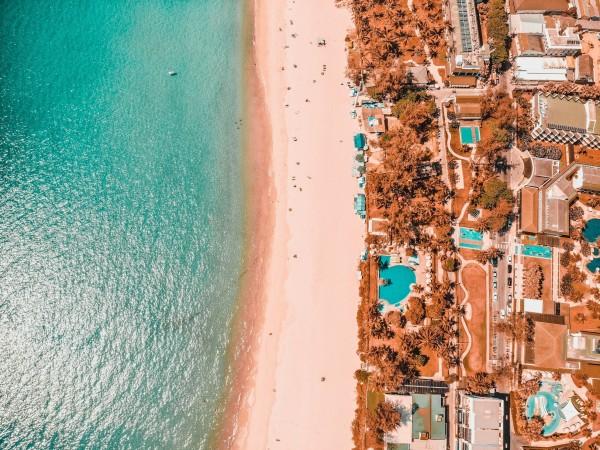
Overview of Phuket
History & Cultural Influence
Phuket’s history is a blend of fascinating stories and cultural intersections. Originally a small fishing village, Phuket has evolved into a thriving hub for international tourism, yet it retains its rich historical roots. The island was once an important trading post, attracting merchants from China, India, and Arabia, leaving a lasting impact on its culture and architecture. Old Phuket Town is a prime example of this cultural fusion with many Sino-Portuguese buildings, colorful shophouses, and ornate temples, each telling a story of the island’s past.
Interaction with The Locals
Phuket is home to a diverse population of approximately 540,000 residents. The island's people, known as Phuketians, reflect a rich mix of cultures, including Thai, Chinese, Malay, and sea gypsies. This cultural diversity is evident in the island’s traditions, festivals, and cuisine. While Thai Buddhists make up the majority, there is also a significant Muslim community. The locals are known for their warm hospitality, making visitors feel welcome with their friendly and laid-back attitude. This blend of cultures and the local way of life adds to Phuket's unique charm.
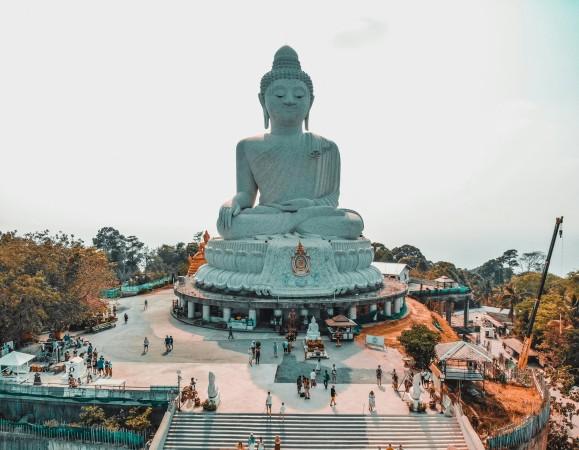
Big Buddha in Phuket - © Miltiadis Fragkidis
Top Attractions in Phuket
Whether you’re drawn to the vibrant beaches, cultural landmarks, or natural wonders, each attraction offers a unique glimpse into Phuket’s beauty and culture, making them essential stops on any visitor’s itinerary.
- Patong Beach: Patong Beach is the heart of Phuket, famous for its lively atmosphere, golden sands, and turquoise waters. It’s the perfect place to enjoy sunbathing, water sports, and vibrant nightlife. The beach is lined with restaurants, bars, and shops, making it a bustling hub of activity day and night.
- Big Buddha: Located atop Nakkerd Hill, the Big Buddha is among Phuket's most iconic sites. Standing 45 meters tall, this towering monument provides panoramic views of the island. It’s not just a tourist spot but also a place of worship and reflection, attracting both locals and visitors alike.
- Phi Phi Islands: A short boat ride from Phuket, the Phi Phi Islands are a slice of paradise. Known for their stunning beaches, crystal-clear waters, and vibrant marine life, these islands are ideal for snorkeling, diving, and beach lounging.
- Phang Nga Bay: Phang Nga Bay is famous for its dramatic limestone cliffs rising from emerald-green waters. The bay is best explored by boat, where you can glide through hidden lagoons, caves, and islets. James Bond Island, featured in "The Man with the Golden Gun," is a must-see site in the bay.
- Wat Chalong: Wat Chalong is Phuket’s largest and most revered temple. This Buddhist temple complex is a spiritual center for the island’s residents, where locals come to pray and pay respects. Visitors can explore the temple’s beautiful architecture, learn about Buddhist practices, and experience a moment of serenity amidst the island’s bustling attractions.
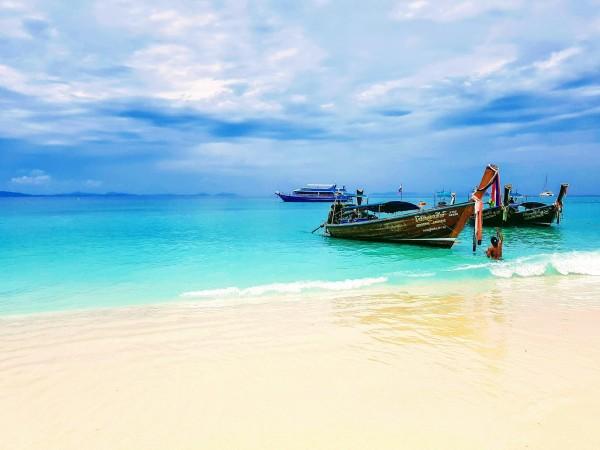
Phi Phi Islands' pristine coast - © The DK Photography
Must-Try Dishes in Phuket
Phuket’s cuisine is a delicious fusion of flavors and influences, making it a paradise for food lovers. These dishes not only showcase Thai culinary diversity but also provide a delicious way to connect with the island’s culture and traditions.
- Tom Yam Goong: Tom Yam Goong is a signature Thai dish that’s both spicy and sour. This shrimp soup is infused with aromatic herbs like lemongrass, galangal, and kaffir lime leaves, creating a vibrant and refreshing flavor that’s quintessentially Thai.
- Pad Thai: Pad Thai is a beloved stir-fried noodle dish known worldwide, but in Phuket, it’s often made with fresh seafood. Rice noodles, eggs, tofu, and a squeeze of lime are topped with crunchy peanuts to create the ideal combination of sweet, sour, and savory flavors.
- Mee Hokkien: A true Phuket specialty, Mee Hokkien features stir-fried yellow noodles with a rich mix of pork, seafood, and vegetables. This dish is a nod to Phuket’s Chinese heritage, offering a hearty and satisfying meal that’s full of flavor.
- Kanom Jeen: Kanom Jeen is a popular breakfast dish in Phuket, consisting of soft, fermented rice noodles served with a variety of curries, fresh herbs, and vegetables. Each curry offers a different taste experience, from mild coconut-based sauces to spicy fish curries.
- Oh Aew: For dessert, try Oh Aew, a refreshing local treat made from banana-flavored jelly, red beans, and ice. This refreshing, sweet meal is ideal for fighting the tropical heat and is a local favorite.
- Roti: Phuket's Roti is a famous street meal consisting of thin, crispy pancakes loaded with sweet or savory ingredients. Whether you choose a banana and condensed milk filling or opt for an egg and curry combo, this snack is sure to satisfy.
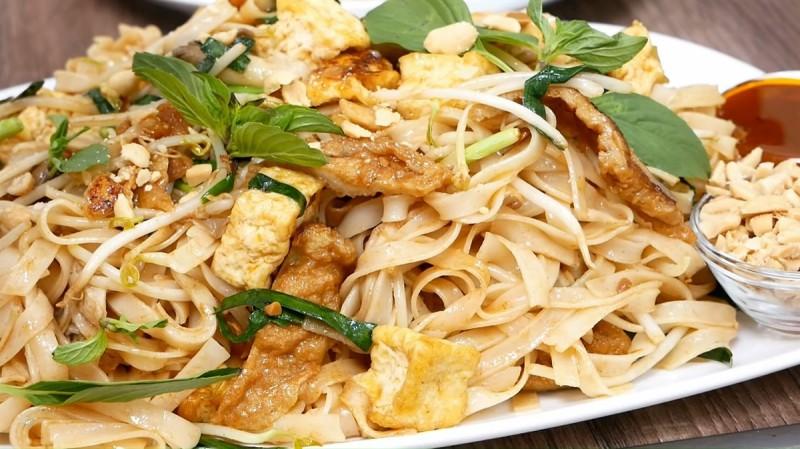
Pad Thai - © Foody
Festivals & Local Celebrations
Phuket Vegetarian Festival
The Phuket Vegetarian Festival is one of the island’s most famous and visually striking events. Held annually in October, this nine-day festival is rooted in Chinese Taoist beliefs and involves a series of rituals aimed at purifying the body and mind. The festival is known for its dramatic street processions to bring good luck to the community. Visitors can also enjoy a variety of vegetarian dishes prepared by local vendors, showcasing the island’s culinary creativity.
Songkran Festival (Thai New Year)
Songkran, the Thai New Year celebrated in mid-April, is marked by joyful water fights across the country, and Phuket is no exception. The festival is a time for cleansing and renewal, and you’ll find locals and tourists alike joining in the fun, splashing water on each other in the streets. It’s a lively and refreshing way to experience Thai culture and make new friends along the way.
Loy Krathong
Loy Krathong, also known as the Festival of Lights, is celebrated in November and is one of Thailand’s most beautiful festivals. In Phuket, locals gather at beaches, rivers, and lakes to release small, decorated floats made of banana leaves, flowers, and candles onto the water. The act symbolizes the letting go of past misfortunes and the welcoming of good fortune. The sight of thousands of glowing krathongs floating on the water under the night sky is a breathtaking experience.
Phuket Old Town Festival
The Phuket Old Town Festival, usually held in February, is a celebration of the island’s cultural heritage. The festival features parades, traditional performances, and street food stalls, all set against the backdrop of the beautifully preserved Sino-Portuguese architecture of Old Phuket Town. It’s an ideal event for those interested in learning more about the island’s history and cultural diversity.
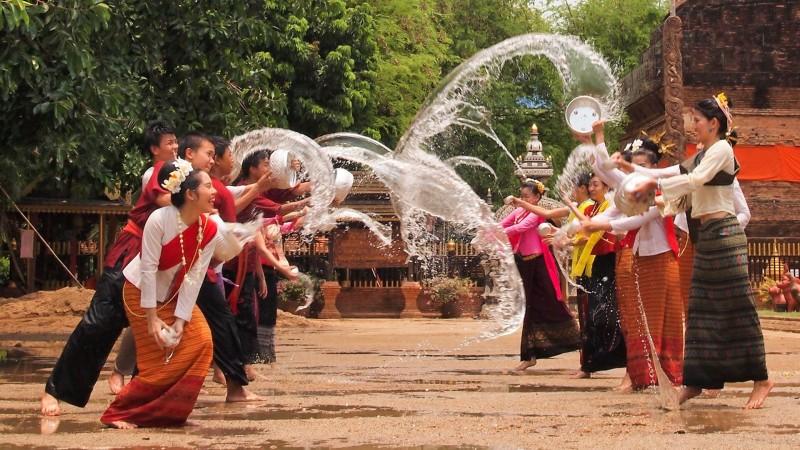
Songkran Festival (Thai New Year) - © Britannica
What to Do in Phuket
Phuket offers a wide range of activities that cater to all types of travelers, from adventure seekers to those looking for relaxation.
- Island Hopping in Phuket: Phuket is surrounded by stunning islands, each offering unique experiences. Popular island-hopping tours include visits to the Phi Phi Islands, Similan Islands, and Racha Islands. These tours typically include snorkeling, swimming, and sunbathing on pristine beaches, making them a must-do for nature lovers.
- Water Sports: For adrenaline junkies, you can try everything from jet skiing and parasailing to scuba diving and surfing. Kata Beach is a popular spot for surfers, especially during the monsoon season, while the calm waters of Nai Harn Beach are ideal for paddleboarding.
- Cultural Tours in Phuket: Visit the island’s temples, such as Wat Chalong and Wat Phra Thong, to learn about local spiritual practices. You can also explore Phuket Old Town on a walking tour, where you’ll discover its colorful streets, historical buildings, and vibrant street art.
- Wellness Retreat in Phuket: Phuket is also renowned for its wellness offerings. The island is home to numerous luxury spas and wellness retreats where you can indulge in traditional Thai massages, yoga sessions, and detox programs.
Shopping in Phuket
Phuket offers a diverse shopping experience, from bustling markets to high-end malls, ensuring that every traveler finds something special to take home.
- Night Markets: Phuket’s night markets are a must-visit for anyone looking to experience local life and pick up unique souvenirs. Phuket Weekend Market in Chao Fa West is the largest, offering everything from clothing and accessories to handicrafts and street food. Chillva Market in Phuket Town is another popular spot, known for its trendy, bohemian vibe and eclectic mix of stalls.
- Jungceylon Shopping Mall: Located in Patong, Jungceylon Shopping Mall is the island’s premier shopping destination, housing a wide range of international and local brands. The mall also features entertainment options, including a cinema and bowling alley, making it a great place to spend an afternoon.
- Central Phuket: Central Phuket is another major shopping complex that offers a more upscale experience. It’s divided into two sections: Floresta, which focuses on luxury brands and high-end dining, and Festival, which offers a broader range of products and services, including a supermarket and an aquarium.
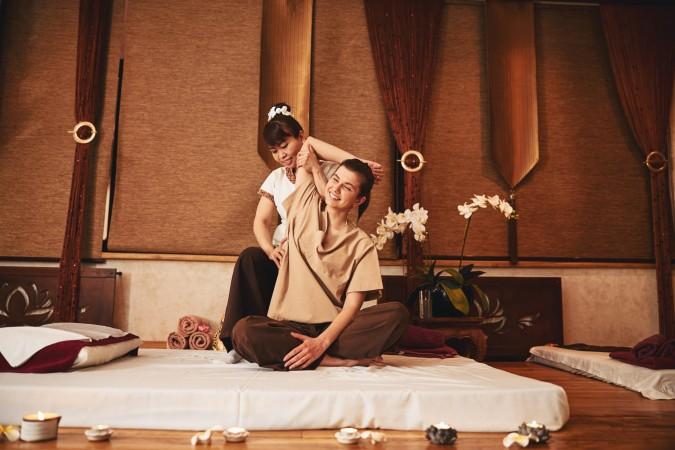
Wellness Retreat in Phuket with traditional Thai massages - © iStock
Weather in Phuket: Best Time to Visit
Cool Season in Phuket
The cool season, spanning from November to February, is Phuket’s peak tourist period. With temperatures ranging between 24°C and 31°C (75°F to 88°F) and minimal rainfall, it’s the ideal time for beach lovers and outdoor enthusiasts. The seas are calm, perfect for activities like snorkeling, diving, and boat tours. Due to its popularity, this period tends to be busier, so booking accommodations and tours in advance is advisable.
Hot Season in Phuket
From March to May, Phuket experiences its hottest months, with temperatures soaring up to 36°C (97°F). While the heat can be intense, it’s a great time for those who enjoy sunbathing and exploring Phuket’s cultural attractions, as the crowds thin out slightly. This period also marks the start of the Songkran Festival, where you can join in the traditional water fights to cool off.
Monsoon Season in Phuket
Phuket’s monsoon season runs from June to October, bringing frequent rain showers, often in the late afternoon or evening. While temperatures remain warm, ranging from 25°C to 32°C (77°F to 90°F), the rain can be unpredictable. However, the monsoon season also means fewer tourists, lower prices, and a more relaxed vibe. It’s a great time to explore the island’s lush landscapes, take advantage of discounted rates, and enjoy quieter beaches.
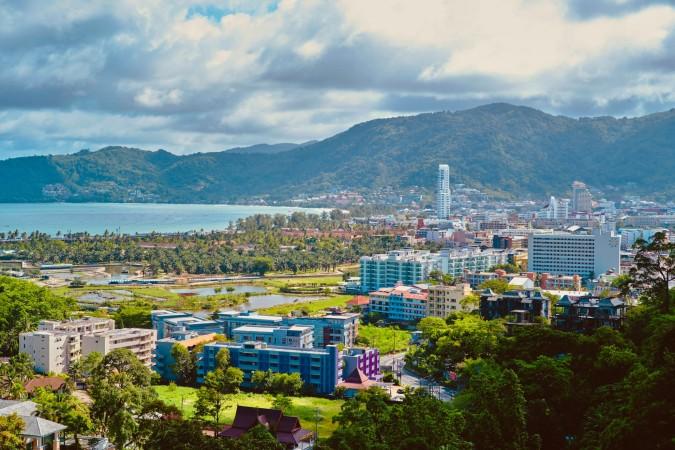
Sunny day in Phuket - © Clark Gu
Culture Etiquette in Phuket
Understanding and respecting local customs is key to a positive experience in Phuket. Here are some local customs you should keep in mind:
- Respect for the Monarchy: Thais hold their monarchy in high regard, and it’s essential to show respect when discussing or encountering images of the royal family. Avoid making any negative comments, and be mindful when taking photos of statues or portraits.
- Buddhist Practices: Buddhism is deeply ingrained in Thai culture. When visiting temples, dress modestly, covering your shoulders and knees and remove your shoes before entering. Women should avoid making personal contact with monks, including giving them anything directly.
- Wai Greeting: The traditional Thai greeting, known as the "wai," is pressing your palms together in a prayer-like motion while gently bowing your head. It’s a sign of respect and is typically used when meeting someone or saying goodbye.
- Head and Feet: In Thai tradition, the head is the most holy portion of the body, while the feet are regarded as the lowest. Avoid touching anyone's head, even jokingly, and do not aim your foot toward people or holy symbols.
Essential Travel Information
Getting Around Phuket
- Tuk-Tuks: The iconic tuk-tuks are a popular and fun way to get around Phuket, especially for short distances. While they offer a convenient way to travel, it’s important to agree on the fare before starting your journey, as they typically don’t have meters.
- Songthaews: Songthaews are shared pick-up trucks with seats in the rear that are often utilized by locals for transportation. They run on specific routes around Phuket and are a budget-friendly option for getting from town to town.
- Taxis and Ride-Hailing Services: Taxis are widely available in Phuket, but they can be more expensive than other modes of transport. Ride-hailing services like Grab are also available and can be more convenient, offering a fixed price for your journey.
- Motorbike Rentals: Renting a motorbike is a popular option for those looking to explore Phuket independently. It’s an affordable way to travel and gives you the freedom to visit less accessible areas.
- Public Buses: Phuket has a growing public bus system, with routes connecting major tourist areas such as Patong, Kata, Karon, and Phuket Town. These buses are a cost-effective way to travel, though they may not be as frequent as other options.
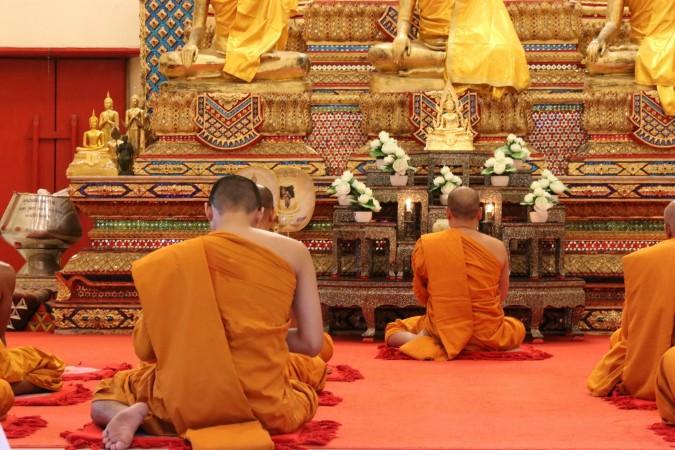
Be mindful when visit Phuket's religious places - © Niels Steeman
ATM & Banking Services
Phuket offers ample ATM and banking services to meet travelers' financial needs, with ATMs widely available in tourist areas and most machines accepting international cards. Currency exchange services are easily accessible at banks, kiosks, and hotels, offering competitive rates. While credit cards are generally accepted in hotels, restaurants, and larger stores, it's advisable to carry some cash for smaller vendors and markets.
Where to Stay in Phuket
- Luxury Resorts: Phuket’s luxury resorts offer premium experiences with features such as private beaches, infinity pools, fine dining, and spa services. These resorts are typically located along the western coast of the island, providing an opulent escape in stunning surroundings.
- Mid-Range Hotels: Mid-range hotels provide a comfortable stay with a range of amenities at more affordable prices. They are commonly found in popular areas and offer conveniences such as swimming pools, fitness centers, and easy access to nearby attractions, striking a balance between comfort and cost.
- Budget-Friendly Hostels: Travelers on a budget will find numerous hostels and guesthouses across Phuket, particularly in bustling areas. Hostels offer dormitory-style rooms while guesthouses provide private rooms with essential amenities at economical rates.
- Homestays: Homestays can be found in various areas across the island, often including meals and cultural activities as part of the experience, allowing visitors to stay with local families, offering insights into Thai culture and daily life while enjoying comfortable lodging.
Articles for you
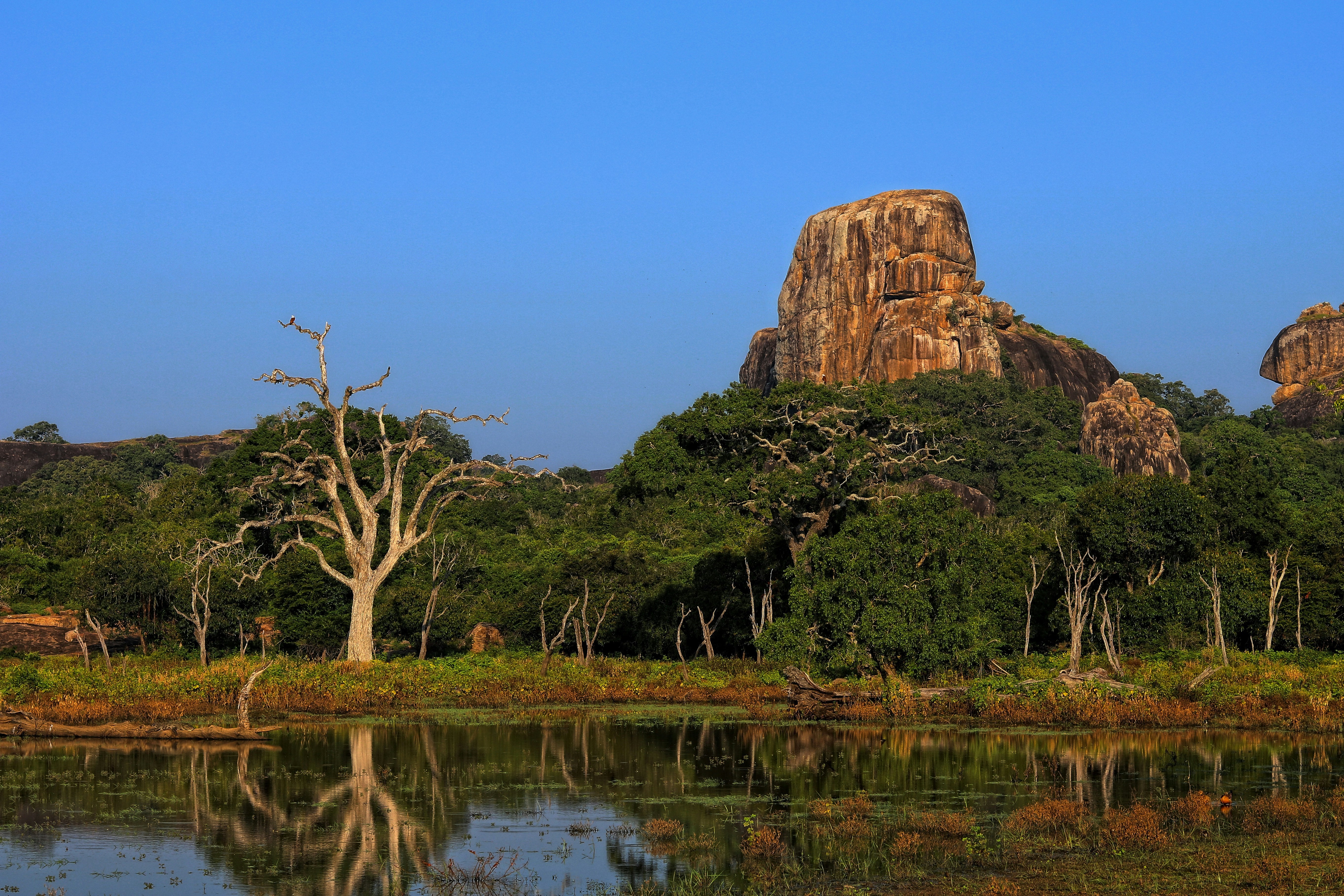
Explore Yala National Park - Sri Lanka Travel, Asia
Tucked away in Sri Lanka’s southeastern corner, Yala National Park is where wild nature meets deep tradition. Known worldwide for its leopard population, the park is also home to elephants, sloth bears, crocodiles, and hundreds of bird species. Beyond wildlife, Yala opens doors to a cultural landscape dotted with ancient temples, Buddhist ruins, and coastal villages. For travelers seeking more than just a safari, Yala offers a chance to explore eco-tourism, local communities, and sacred heritage sites.
Population: The Yala National Park area doesn’t have a human population.
Economy: The economy around Yala National Park thrives on a blend of eco-tourism, agriculture, and local services. Safari tours, eco-lodges, and cultural experiences drive steady income for nearby towns like Tissamaharama and Kataragama, supporting thousands of families.
Landmarks: Famous for Block I of Yala and wildlife encounters, including elephants, sloth bears, crocodiles, and exotic bird species.
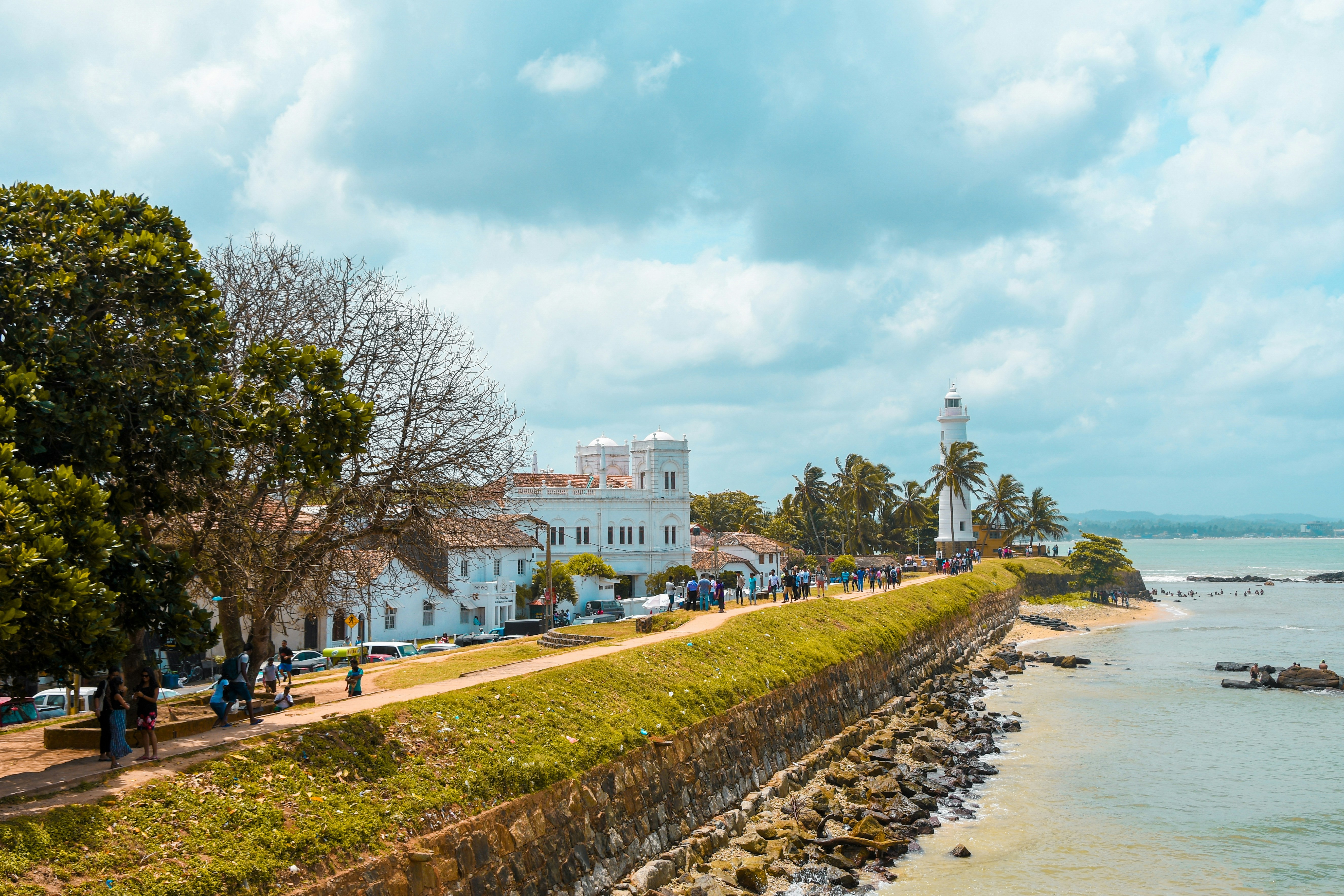
Explore Galle - Sri Lanka Travel, Asia
Nestled on Sri Lanka’s southern coastline, Galle is a vibrant city where history meets the sea. Its cobbled streets, colonial architecture, and serene beaches make it a must-visit destination for travelers seeking a blend of culture, adventure, and relaxation. A UNESCO World Heritage site, Galle captivates visitors with its Dutch Fort, bustling markets, and friendly locals. Whether you’re exploring the ramparts at sunset or savoring fresh seafood by the shore, Galle promises an unforgettable journey into Sri Lanka’s heritage.
Population: Approximately 113,000 in 2023.
Economy: Galle’s economy thrives on tourism, trade, and fisheries. The city’s historic fort, colonial architecture, and coastal charm draw thousands of international visitors each year, making tourism its main economic driver. Fishing remains vital for local livelihoods, supplying fresh seafood across the region.
Landmarks: Famous for the Galle Fort, Dutch Reformed Church & Maritime Museum, and Unawatuna Beach.
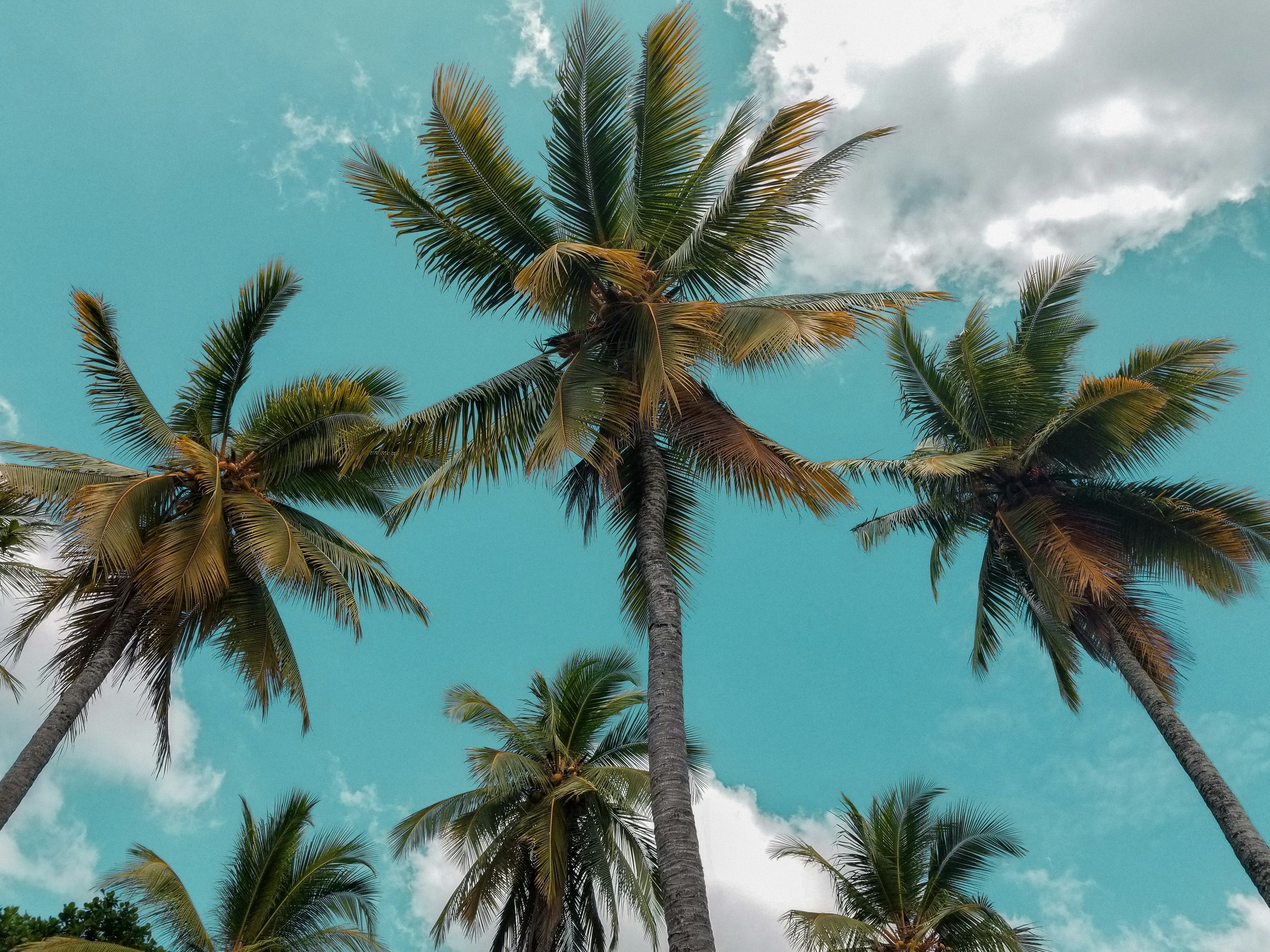
Explore Bentota - Sri Lanka Travel, Asia
Nestled along Sri Lanka’s southwestern coast, Bentota is a tropical paradise that blends golden beaches, vibrant culture, and thrilling adventures. Famous for its calm waters, luxury resorts, and scenic river estuary, Bentota has become a top destination for travelers seeking both relaxation and authentic experiences. From serene beach walks at sunrise to adrenaline-pumping water sports, this coastal town offers a perfect balance of leisure and exploration. With its proximity to Colombo and Galle, Bentota is easy to reach, making it an ideal stop for both short escapes and extended holidays.
Population: Approximately 37,000 in 2023.
Economy: Bentota’s economy thrives mainly on tourism, which drives local businesses such as hotels, restaurants, and wellness retreats. The town also benefits from fishing, coconut cultivation, and handicrafts like wood carving and batik textiles. Many residents rely on the growing demand for water sports and Ayurvedic treatments, making tourism the backbone of both income and employment in the area.
Landmarks: Famous for Bentota Beach, Bentota River Safari, and Kande Vihara Temple.
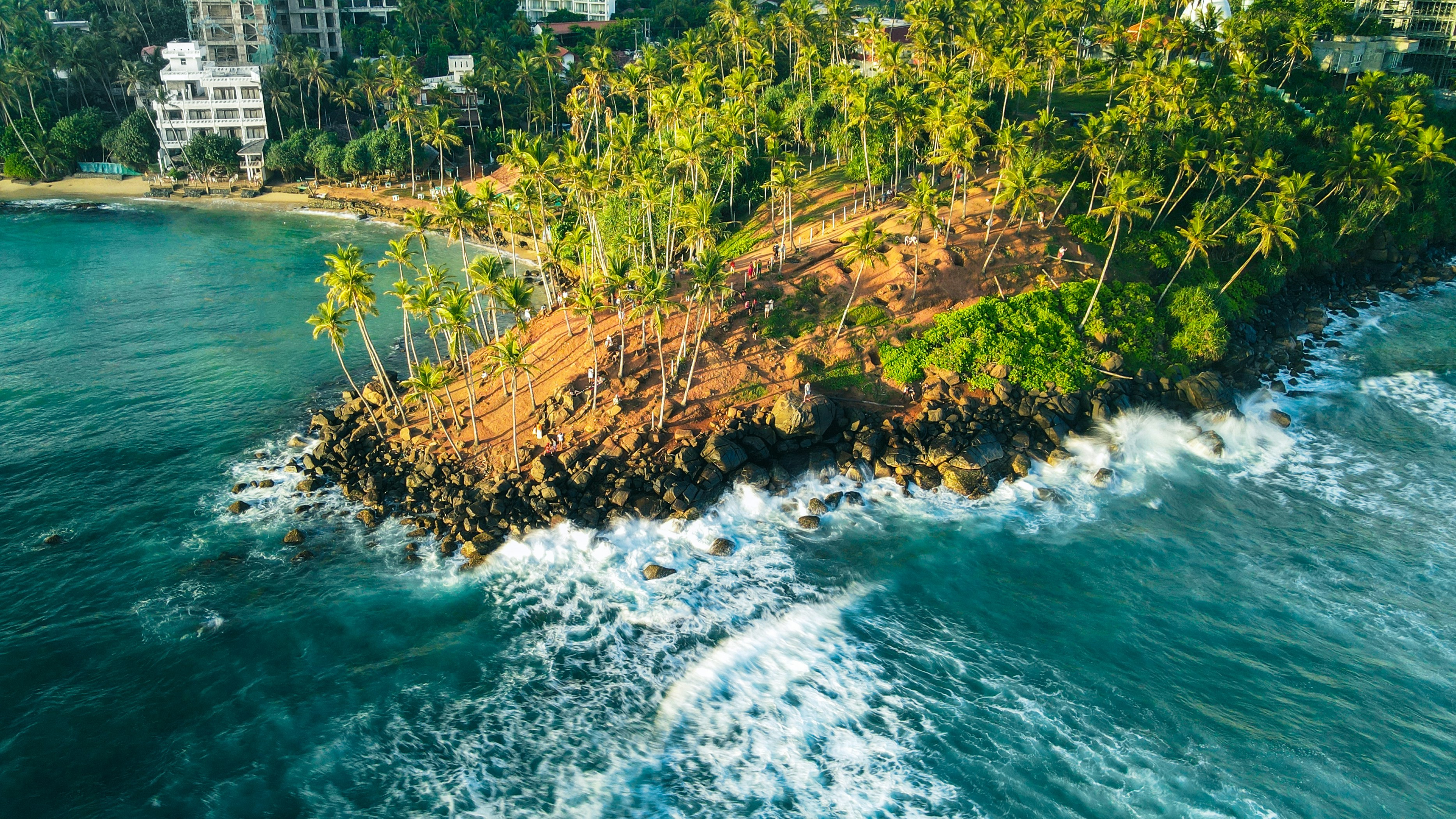
Explore Mirissa - Sri Lanka Travel, Asia
Mirissa is a charming coastal town on Sri Lanka’s southern shoreline. Known for its golden beaches, turquoise waters, and vibrant marine life, it has become a must-visit stop for travelers exploring the island. Many come for whale watching, surfing, and sunset views at Coconut Tree Hill, but Mirissa offers much more than postcard beauty. The fishing boats you see anchored by the bay carry generations of stories. Local traditions, delicious cuisine, and a laid-back rhythm of life shape every visitor’s experience.
Population: Approximately 4,700 in 2023.
Economy: Mirissa’s economy is largely shaped by its coastal location. Fishing has long been the backbone of local livelihoods, with generations relying on the Indian Ocean for income. In recent decades, tourism has become the main driver of growth, thanks to whale watching, surfing, and beachside hospitality.
Landmarks: Famous for Mirissa Beach, Coconut Tree Hill, and Parrot Rock Bridge.
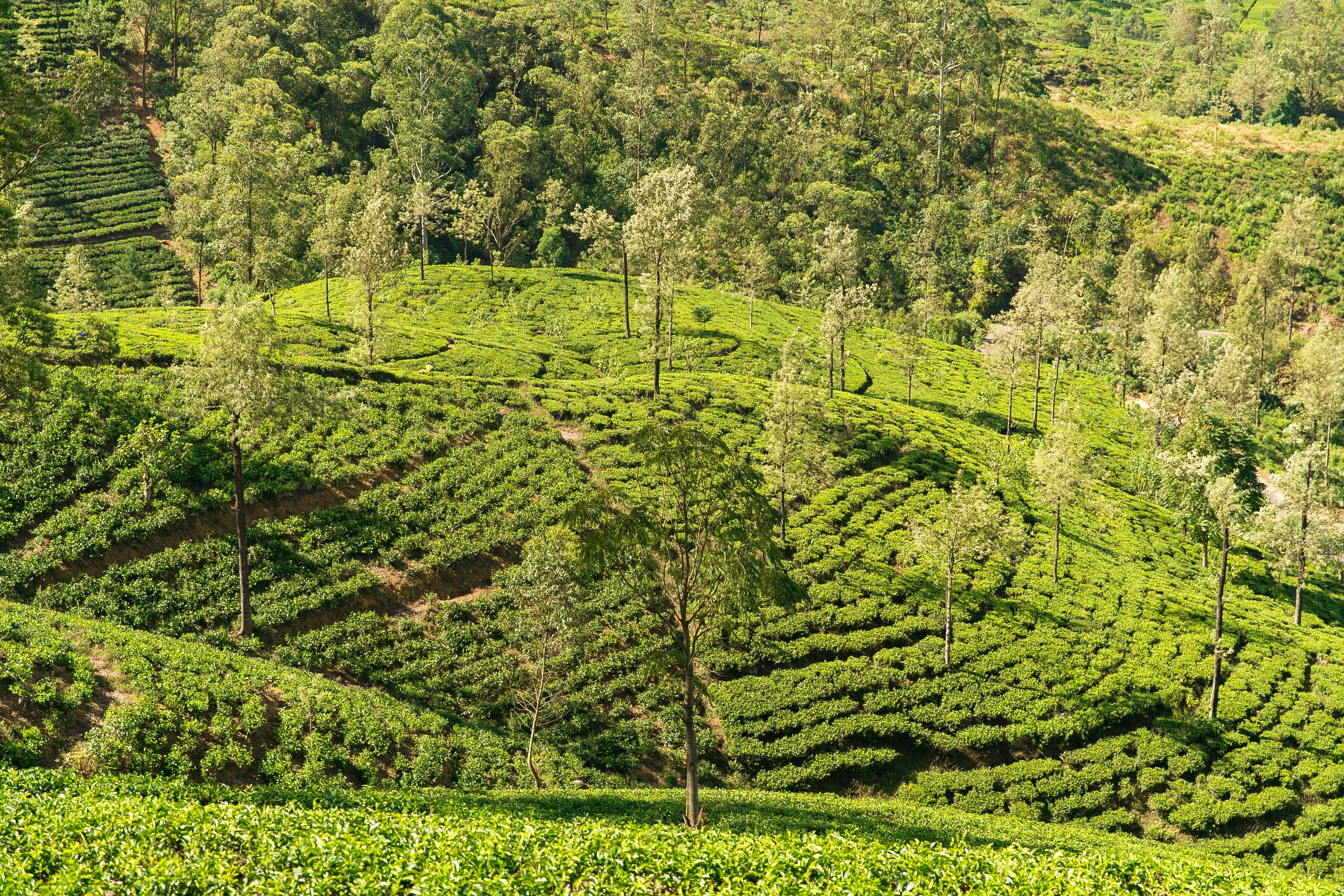
Explore Nuwara Eliya - Sri Lanka Travel, Asia
Tucked away in the Central Highlands of Sri Lanka, Nuwara Eliya is often called “Little England”. With its rolling tea plantations, cool misty mornings, and colonial charm, this mountain town feels like a step into another world. Travelers come here to breathe fresh air, walk through flower gardens, sip the finest Ceylon Tea, and enjoy a pace of life far from the island’s busy cities. Whether you’re drawn by scenic landscapes, heritage architecture, or the warmth of its people, Nuwara Eliya is a destination that blends nature, culture, and history in perfect harmony.
Population: Approximately 781,000 in 2023.
Economy: Nuwara Eliya’s economy thrives mainly on tea production, as it sits in the heart of Sri Lanka’s central highlands, famous worldwide for Ceylon Tea. The city also benefits from a growing tourism industry, attracting visitors with its colonial charm, cool climate, and scenic landscapes.
Landmarks: Famous for Gregory Lake, Hakgala Botanical Garden, and Victoria Park.
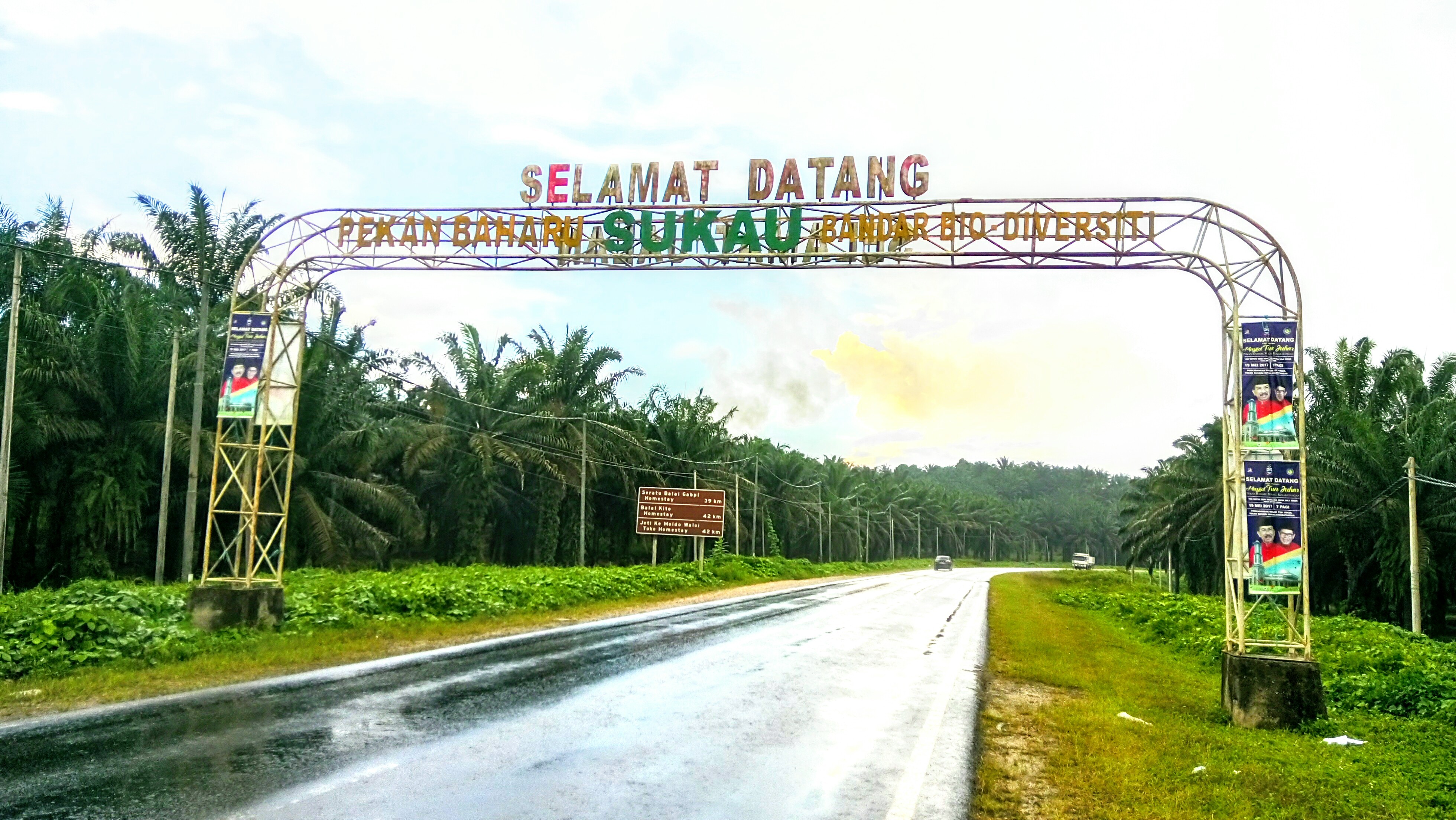
Explore Sukau - Malaysia Travel, Asia
Nestled on the banks of the Kinabatangan River in Sabah, Malaysian Borneo, Sukau is a destination where wildlife, culture, and conservation come together. Known as one of Asia’s top spots for river safaris and eco-tourism, this quiet village offers a front-row seat to encounters with Bornean orangutans, pygmy elephants, proboscis monkeys, and exotic birdlife.
Population: Approximately 1,400 in 2019.
Economy: Sukau’s economy is shaped by its riverine location and natural resources. Traditionally, the Orang Sungai community relied on fishing, small-scale farming, and forest gathering for their livelihood. Today, the village has shifted toward eco-tourism, with river cruises, jungle trekking, and homestays providing income.
Landmarks: Famous for the Kinabatangan River cruises, Gomantong Caves, and Ox-bow lakes and wetlands.
